Practical advice for the whole family
If your child is studying for the HSC, you’re probably feeling the stress too. Many parents want to help but don’t want to interfere.
As well as pre-exam tension, there are other common factors that can make life seem even more challenging for the whole family.
Year 12 is often the year when kids:
- lose interest in school
- have no plans for after the HSC
- develop an intense relationship with a boyfriend or girlfriend
- get their driver’s licence
- experiment with legal or illegal drugs
- have a part-time job
- are a member of a sporting team
- develop an eating disorder
- suffer from depression.
If any of these concerns sound familiar, don’t despair. You’re not alone – and this won’t last forever.
How you can help
Richard Cracknell, counsellor and district guidance officer at Inverell High School advises that “the most obvious forms of support parents can offer are the practical, physical things,” and recommends parents:
- Provide a good place to study, that’s quiet, comfortable, with good ventilation, good lighting, adequate desk or table space and free from distractions such as TV, noise, a telephone, interesting conversations, little brothers and sisters.
- Provide healthy, balanced meals.
- Encourage sleep and regular exercise.
- Encourage them to avoid late night parties and alcohol consumption.
Less obvious, but just important, is giving your child the support they need in the lead-up to exams, which can be hard when emotions run high.
Tips to remember
- Be supportive and encouraging.
- Highlight strengths and successes. Encourage your child not to dwell on failures, but to see them as “mistakes”, which can actually be something they can learn and benefit from.
- Appreciate your child maybe feeling very stressed, even if it’s not obvious to you. Many kids fear letting their family down so beware of setting unrealistic expectations. Some worry they can’t do as well as a sibling, or friend. Many Year 12 kids are feeling overwhelmed about what lies ahead: leaving home, leaving lifelong friends, the prospect of having to live in a new city.
- Understand people under pressure become supersensitive and explosive from time to time. Family members are usually the first targets. Try not to overreact.
- Be realistic in your expectations as to where the HSC leads. Not all HSC students will go on to university – but they can still have a wealth of excellent and satisfying career options. If they don’t get the HSC marks they needed and still really want to go on to tertiary education later, there are many other pathways. Interestingly, the success rate of mature age students is much higher than for those who go straight from school.
- Encourage your child to seek help from teachers or the school counsellor if they are having any difficulty with subjects, study organisation, stress or anxiety about examinations.
- Encourage a healthy balance between work and leisure. Some times kids need a total break from everything for a weekend or so, to recharge their batteries.
- Take an interest in what your child is doing, if they’ll allow you to (some won’t). This can include the subjects or topics being studied, how their study timetables and programs have been organised and their leisure pursuits. (Note: “Taking an interest in” does not mean interfering.)
- Remember the occasional hug and “I love you” don’t go astray, even when they are 18 years old.
- Encourage and allow your child to be as independent as you can possibly stand. The more independent your child is in meeting the demands of Year 12, the better prepared they will be to succeed at a tertiary level or in the workforce.
Just before exams:
- Don’t stress about the little things like leaving lights on, leaving the lid off the toothpaste and not doing chores.
- Don’t panic when they announce on the evening before the examination that they know nothing. (Reassure them, even if you think they could be right. “Just do the best you can. We know you’re giving it your best shot.” is a good standby.)
- Avoid nagging, which doesn’t mean you can’t give a nudge or gentle reminder from time to time.
- Encourage confidence by reassuring your child. If you have doubts, keep them to yourself.
According to Richard Cracknell, all parents make mistakes, and we need to bear in mind that we’re human too.
Don’t feel too badly when you forget not to nag, when you get picky, and complain bitterly that your child has the time to attend the 18th birthday party of every Year 12 student, but doesn’t have time to help with the washing up.
As parents we sometimes can’t help being over-involved and from time to time we also feel the pressure of Year 12.
Know this is a temporary stage, just like the newborn, toddler and adolescent stages you’ve already negotiated together.
Article sourced here: http://www.schoolatoz.nsw.edu.au/homework-and-study/homework-tips/tips-for-surviving-the-hsc




 combining to create
combining to create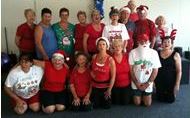 We will have special offers, special events, special times & small gifts to thank our ambassadors, so grab your diary & book out a morning of fitness & fun for everyone.
We will have special offers, special events, special times & small gifts to thank our ambassadors, so grab your diary & book out a morning of fitness & fun for everyone.



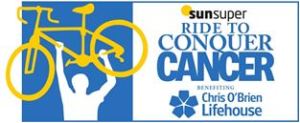
 Great News the Big Balls N Bands sessions start again 9.30 Wednesdays from 6th August. These ever popular sessions are now available to you in the form of a 12 week Group Personal Training Program from the core queen Jacqui.
Great News the Big Balls N Bands sessions start again 9.30 Wednesdays from 6th August. These ever popular sessions are now available to you in the form of a 12 week Group Personal Training Program from the core queen Jacqui.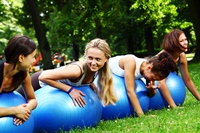 belly plus really good fun and totally time efficient.
belly plus really good fun and totally time efficient. Your health is in your hands this month when you attend our hand reflexology sessions with our resident Massage Therapist Ange Hernandez.
Your health is in your hands this month when you attend our hand reflexology sessions with our resident Massage Therapist Ange Hernandez.
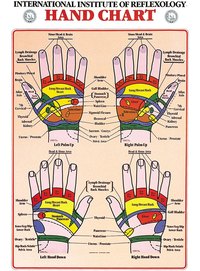 it produces the same positive effects on the brain as meditation. Hand reflexology has also been shown to:~ be beneficial for the heart.
it produces the same positive effects on the brain as meditation. Hand reflexology has also been shown to:~ be beneficial for the heart.

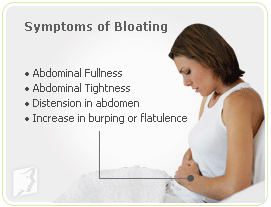












 are made up of a careful balance of protein, carbohydrates and fat to help stabilize your blood sugar and avoid sweet cravings. They will keep you feeling satisfied between meals, prevent hunger and help you to continue making smart eating choices.
are made up of a careful balance of protein, carbohydrates and fat to help stabilize your blood sugar and avoid sweet cravings. They will keep you feeling satisfied between meals, prevent hunger and help you to continue making smart eating choices.

 iners. Our very own Steve Marquette and Tracy Welsh are taking applications right now and with ONLY 3 spots left in the June course, your time is running out to turn your dream into reality.
iners. Our very own Steve Marquette and Tracy Welsh are taking applications right now and with ONLY 3 spots left in the June course, your time is running out to turn your dream into reality. Put some Soul into your Sole this month by creating very happy feet at our Foot Reflexology sessions with our resident Massage Therapist Angela Hernandez.
Put some Soul into your Sole this month by creating very happy feet at our Foot Reflexology sessions with our resident Massage Therapist Angela Hernandez. particular areas of the soles of the feet. A reflex action in another part of the body is stimulated by the manipulation of each specific area.
particular areas of the soles of the feet. A reflex action in another part of the body is stimulated by the manipulation of each specific area.










 On Saturday we had a mega morning of exercise with the launches of our latest PUMP, CYCLE, ATTACK & BALANCE programs. The theme for the morning was nautical and congratulations to our best dressed members who all took away a 30 minute massage from our lovely masseuse Angela. We have 23 of these classes on our weekly timetable so come and try a class today.
On Saturday we had a mega morning of exercise with the launches of our latest PUMP, CYCLE, ATTACK & BALANCE programs. The theme for the morning was nautical and congratulations to our best dressed members who all took away a 30 minute massage from our lovely masseuse Angela. We have 23 of these classes on our weekly timetable so come and try a class today.
 ding the natural supplement revolution on the Coffs Coast. We are extremely pleased to bring to you our new ALL NATURAL product range of protein powder, green super food, protein bars and green tea extract. Here they are:
ding the natural supplement revolution on the Coffs Coast. We are extremely pleased to bring to you our new ALL NATURAL product range of protein powder, green super food, protein bars and green tea extract. Here they are:
 45g 180 Natural Superfood Bars, as well as the 60g WOD bars. Both the chocolate & the cocount flavours are devine!
45g 180 Natural Superfood Bars, as well as the 60g WOD bars. Both the chocolate & the cocount flavours are devine!




